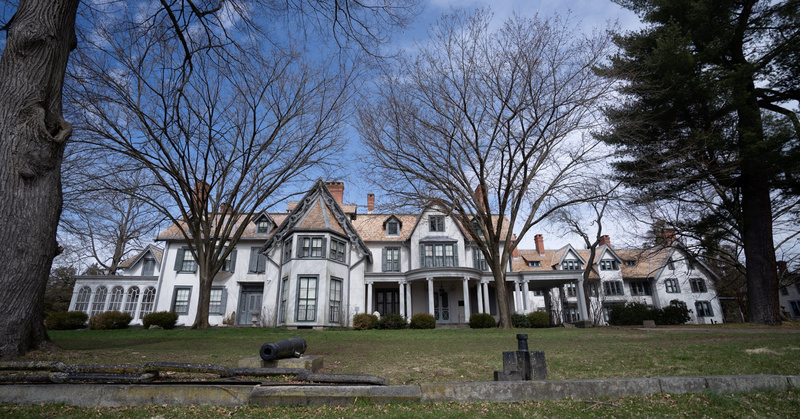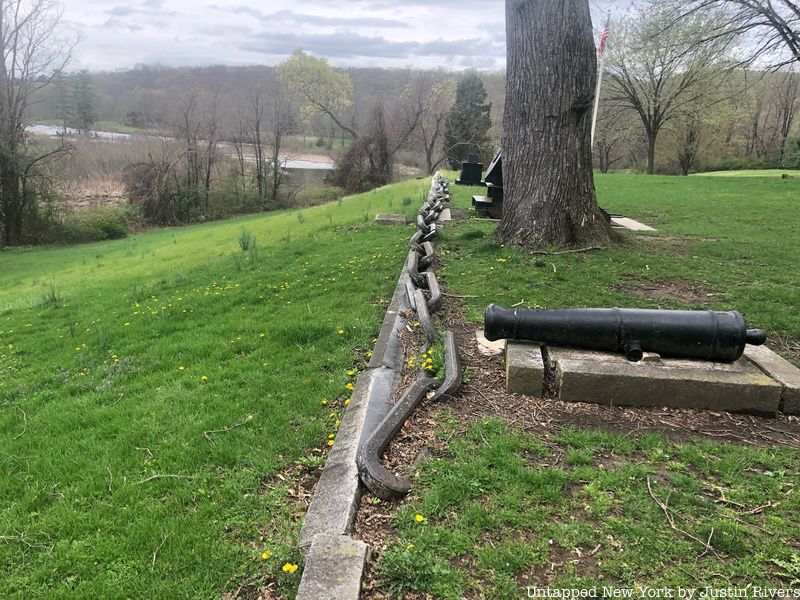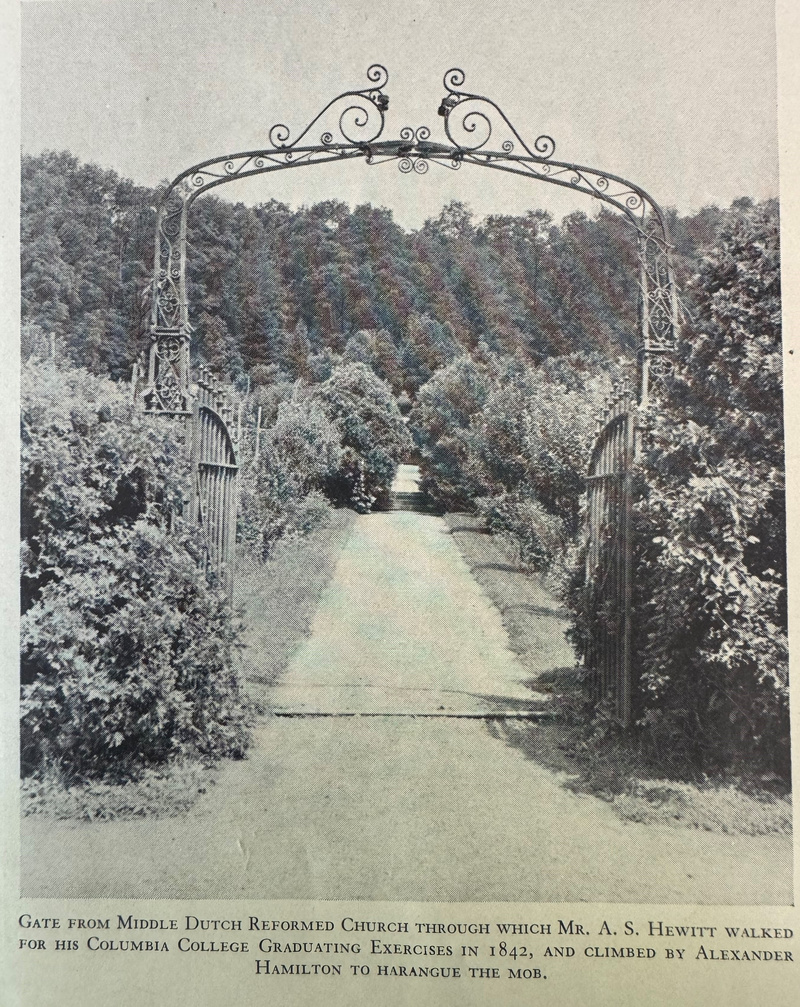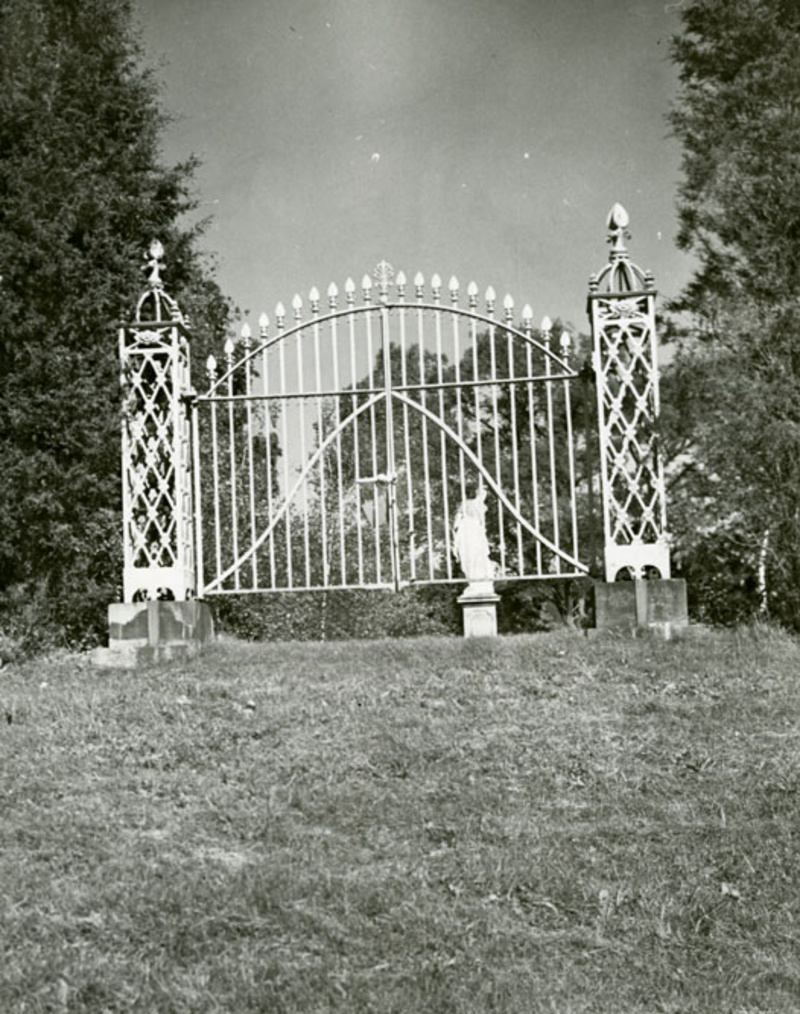Last Chance to Catch NYC's Holiday Notalgia Train
We met the voices of the NYC subway on our nostalgia ride this weekend!

How did a gate from one of the former campuses of Columbia University end up at a Victorian mansion inNew Jersey?!

Scattered across the grounds of Ringwood Manor, a Victorian estate in the highlands of New Jersey, there are remnants of New York history from the days of Dutch New Amsterdam and the American Revolution through to the Gilded Age. On an upcoming tour of the manor and grounds, you can visit a pear tree with ties to Peter Stuyvesant, the gate of Mrs. Astor’s 33rd Street house in Manhattan, and an iron chain with dubious origins, among other relics, including a gate from a former campus of Columbia University.
On May 18th, join Untapped New York’s Chief Experience Officer Justin Rivers and Ringwood Manor historian Sarah Tracey, for a 32-room tour of the opulent house, followed by an optional walk through the woods along an abandoned iron mine trail! This experience is just $10 for Untapped New York Insiders, 100% of which goes to Ringwood Manor. Not an Insider yet? Become a member today with promo code JOINUS and get your first month free!
The land on which Ringwood Manor sits is rich with iron ore. Welsh miner Cornelius Board was likely the first person to mine the area in the mid-1700s. A few years later, the land was purchased by the Ogden family who established the Ringwood Ironworks Company. During the Revolution, iron mined on-site went to Continental Army defense systems, tools, and hardware. At the time of the Civil War, Ringwood iron was used for Union gunmetal.
By the time the Hewitt family assumed ownership of Ringwood in the 1860s, the estate had a long and rich history. The Hewitts, one of the wealthiest and most influential families of 19th-century America, used Ringwood as a summer home. Mrs. Sarah Amelia Hewitt was the daughter of Peter Cooper, founder of Cooper Union and her husband Abram Hewitt was a lawyer and the founder of Trenton Ironworks. He served as a congressman from 1876 to 1877 and was the 87th mayor of New York City from 1887 to 1888.

Before the Hewitts, the Ryserson family owned Ringwood and they constructed a small, 10-room house on the property. The Hewttis expanded the home multiple times throughout the 19th century. By 1910 there were a whopping 51 rooms inside!
As avid Victorian collectors, Mr. and Mrs. Hewitt filled their home and the formal grounds with a variety of artifacts and sculptures. In a nod to the site’s iron history, Abram purchased a length of iron chain said to have been part of the Hudson River defense system during the Revolution. He soon found out he’d been conned. Though the chain that stretches across the grounds to this day did not actually ward off British ships, it remains a reminder of Ringwood’s past.

Another interesting artifact on the grounds is a gate that originally stood on the campus of Columbia College, now Columbia University. While the campus is now located in Morningside Heights, this historic place of higher learning originally occupied land on Park Place, near City Hall. In 1857, the college moved into the former New York Institution for the Instruction of the Deaf and Dumb in midtown, bounded by 49th and 50th Streets and Madison and Park Avenues.
Abram Hewitt, an alum and trustee of Columbia, salvaged gates from the campuses and brought them to his estate in New Jersey. When Abram’s son Erskine Hewitt donated Ringwood to the State of New Jersey in 1936 to be used as a museum, he also gave some of the gates back to Columbia University.

One gate he gave back came from the Middle Dutch Reformed Church in Lower Manhattan where Columbia hosted its earliest commencement ceremonies. Abram was one of the graduates who passed under this gate. It also has ties to Alexander Hamilton, who is said to have hung from its posts while rallying crowds during his time at King’s College. Today, you can find the gate near St. Paul’s Chapel and Buell Hall on the Morningside Heights campus.
Another gate that temporarily stood at Ringwood but was gifted back to Columbia came from the second campus. Today, the gate stands in front of John Jay Hall, east of Butler Library. Erskine donated the gates in memory of his father. The one gate from Columbia that remains at Ringwood is also from the 49th Street campus.

Erskine kept a record of the many historic items placed around the grounds in a pamphlet titled “The Forges and Manor of Ringwood: Guide to Some of the Outdoor Items of Interest and Relics.” In this small booklet dated to 1935, he made note of the origins of each piece on the grounds. The black and white photos above are from that booklet.
Discover even more exciting remnants and treasures of Ringwood Manor on our upcoming tour of Ringwood Manor!
Next, check out Secrets of Columbia University
Subscribe to our newsletter